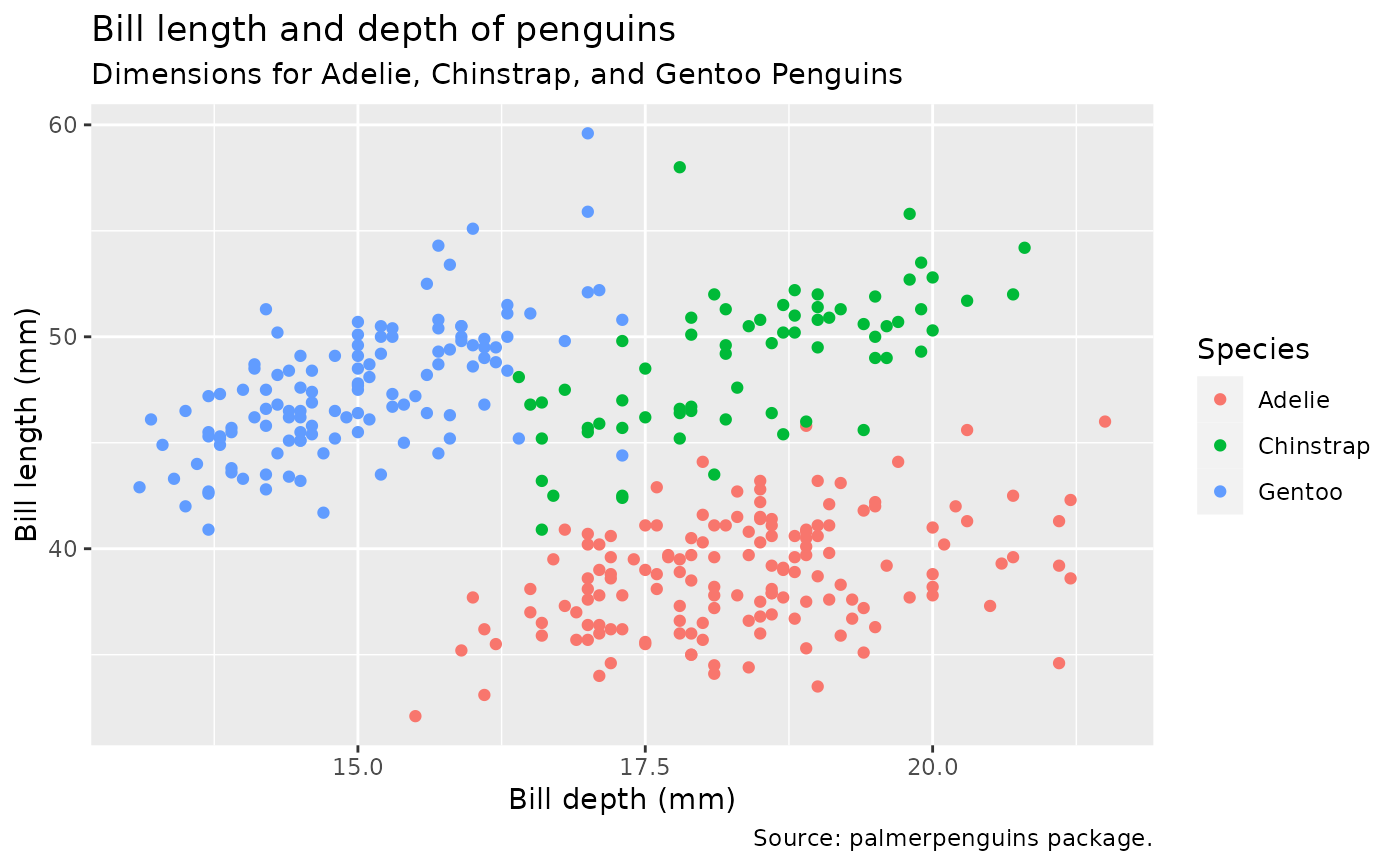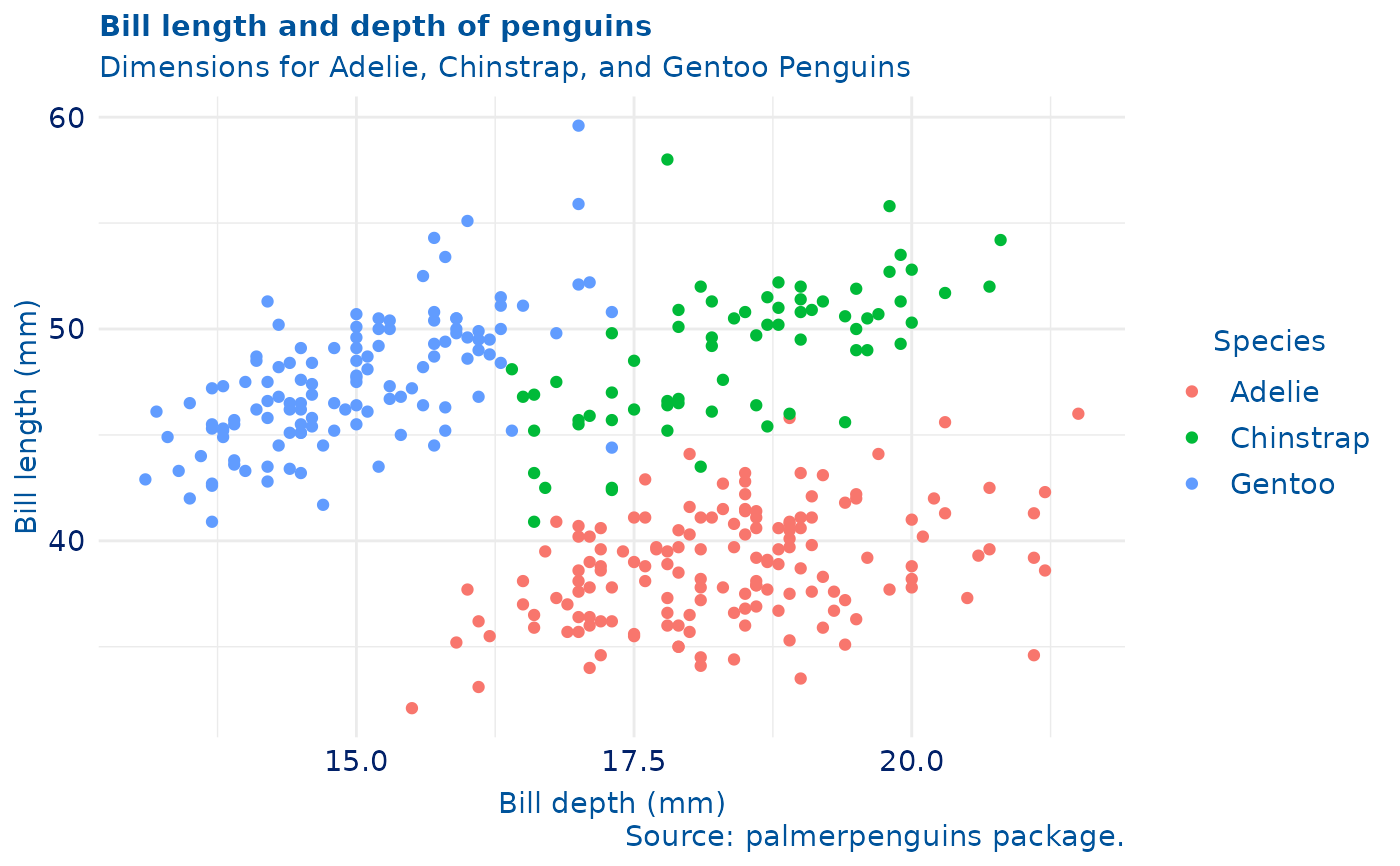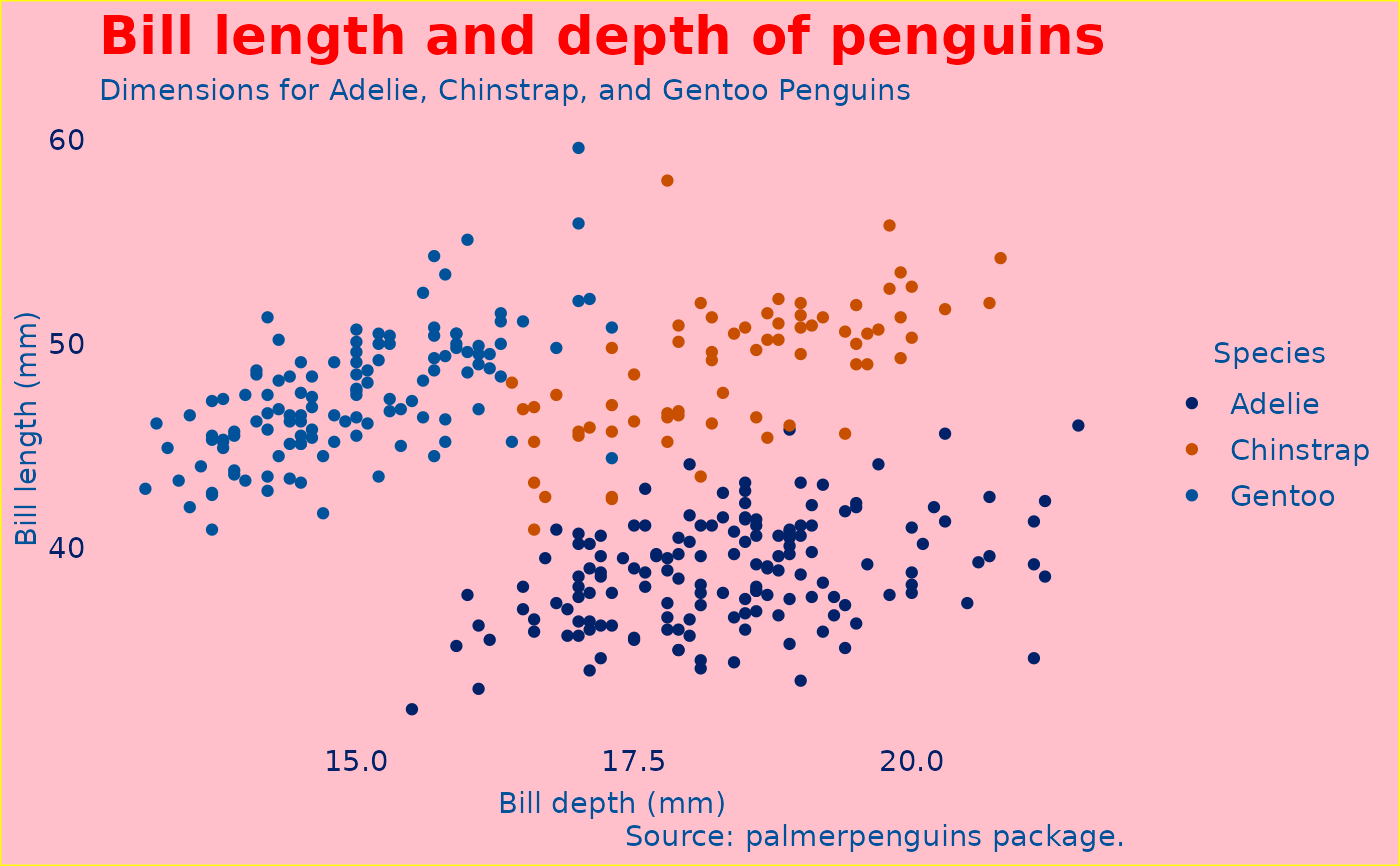Defines the overall aesthetic and thematic features of the plot. This function specifies simple background, grid line, text, and legend arguments to create minimalist design. Its use is intended for ggplot objects.
Usage
theme_duke(
base_size = 11,
base_family = "",
base_line_size = base_size/22,
base_rect_size = base_size/22
)Arguments
- base_size
the base size
- base_family
the base family
- base_line_size
the baseline size
- base_rect_size
the base rect
Examples
library(ggplot2)
library(palmerpenguins)
# default
p <- ggplot(penguins, aes(x = bill_depth_mm, y = bill_length_mm, color = species)) +
geom_point() +
labs(
title = "Bill length and depth of penguins",
subtitle = "Dimensions for Adelie, Chinstrap, and Gentoo Penguins",
x = "Bill depth (mm)",
y = "Bill length (mm)",
color = "Species",
caption = "Source: palmerpenguins package."
)
p
#> Warning: Removed 2 rows containing missing values (`geom_point()`).
 # vs. with Duke theme
p +
theme_duke()
#> Warning: Removed 2 rows containing missing values (`geom_point()`).
# vs. with Duke theme
p +
theme_duke()
#> Warning: Removed 2 rows containing missing values (`geom_point()`).
 # vs. with Duke theme and scale
p +
scale_duke_color_discrete() +
theme_duke()
#> Warning: Removed 2 rows containing missing values (`geom_point()`).
# vs. with Duke theme and scale
p +
scale_duke_color_discrete() +
theme_duke()
#> Warning: Removed 2 rows containing missing values (`geom_point()`).
 # with Duke theme, scale, and further customization to theme
p +
scale_duke_color_discrete() +
theme_duke() +
theme(
plot.title = element_text(color = "red", size = 20),
plot.background = element_rect(fill = "pink", color = "yellow"),
panel.grid = element_blank()
)
#> Warning: Removed 2 rows containing missing values (`geom_point()`).
# with Duke theme, scale, and further customization to theme
p +
scale_duke_color_discrete() +
theme_duke() +
theme(
plot.title = element_text(color = "red", size = 20),
plot.background = element_rect(fill = "pink", color = "yellow"),
panel.grid = element_blank()
)
#> Warning: Removed 2 rows containing missing values (`geom_point()`).

